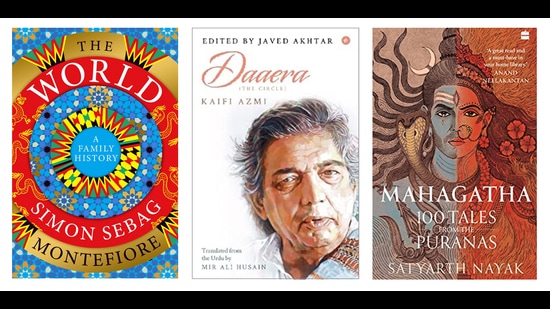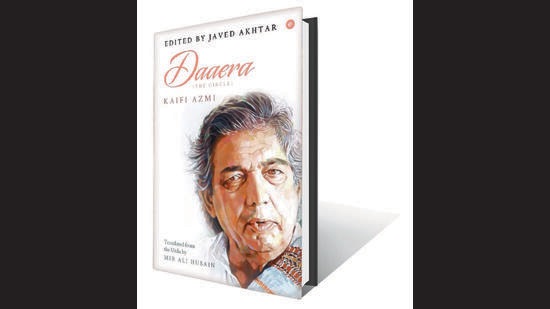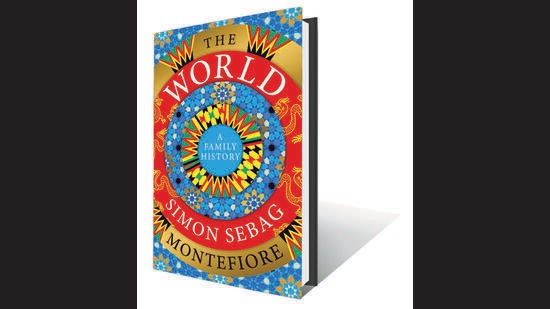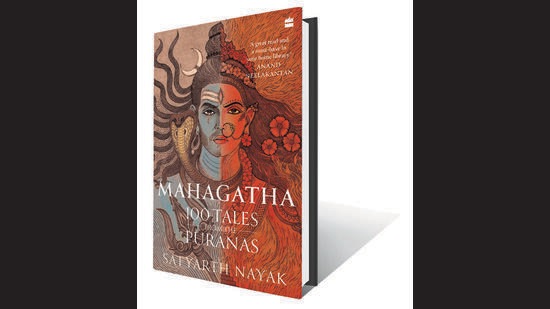HT Picks; New Reads
On the reading list this week is an edition of companion volumes that showcases 25 nazmseach from two of India’s most iconic Urdu poets, Jan Nisar Akhtar and Kaifi Azmi, another two-volume set on the story of humanity from prehistory to the present day, told through the one thing all humans have in common: family, and an illustrated edition of 100 great mythological tales from the Puranas
A treat for poetry lovers everywhere


Kaifi Azmi (1919–2002) was an Indian Urdu poet. He is remembered as the one who brought Urdu literature to Indian motion pictures. Together with Pirzada Qasim, Jaun Elia and others, he participated in many memorable mushaira gatherings of the twentieth century. His wife was a theatre and film actress Shaukat Kaifi and his daughter is Shabana Azmi.
Jan Nisar Akhtar (1914–1976) was an Urdu poet and also a lyricist in Bollywood. His career spanned four decades, during which he worked with music composers including C Ramchandra, OP Nayyar, N Dutta and Khayyam and wrote 151 songs. Notable among them were songs from Guru Duttʼs CID (1956) and Kamal Amrohiʼs Razia Sultan. His collection of poems Khaak-e-dil (Ashes of the Heart) was awarded the 1976 Sahitya Akademi Award. He is survived by his son Javed Akhtar.
This collector’s edition of companion volumes Dhanak and Daaera is a treat for poetry lovers everywhere. Selected and edited by Shabana Azmi and Javed Akhtar, they showcase 25 nazms each from two of India’s most iconic Urdu poets, Jan Nisar Akhtar and Kaifi Azmi, in the Nastaliq and Devanagari scripts, as also in English translation by Sumantra Ghosal and Mir Ali Husain.*
History on a grand and intimate scale

From the master storyteller and internationally best selling author, Simon Sebag Montefiore comes the story of humanity from prehistory to the present day, told through the one thing all humans have in common: family.
We begin with the footsteps of a family walking along a beach 950,000 years ago. From here, Montefiore takes us on an exhilarating epic journey through the families that have shaped our world: the Caesars, Medicis and Incas, Ottomans and Mughals, Bonapartes, Habsburgs and Zulus, Rothschilds, Rockefellers and Krupps, Churchills, Kennedys, Castros, Nehrus, Pahlavis and Kenyattas, Saudis, Kims and Assads.
A rich cast of complex characters form the beating heart of the story. Some are well-known leaders, from Alexander the Great, Attila, Ivan the Terrible and Genghis Khan to Hitler, Thatcher, Obama, Putin and Zelensky. Some are creative, from Socrates, Michelangelo and Shakespeare to Newton, Mozart, Balzac, Freud, Bowie and Tim Berners-Lee.
Others are lesser-known: Hongwu, who began life as a beggar and founded the Ming dynasty; Kamehameha, conqueror of Hawaii; Zenobia, Arab empress who defied Rome; King Henry of Haiti; Lady Murasaki, first female novelist; Sayyida al-Hurra, Moroccan pirate-queen. Here are not just conquerors and queens but prophets, charlatans, actors, gangsters, artists, scientists, doctors, tycoons, lovers, wives, husbands and children.
This is world history on the most grand and intimate scale -- spanning centuries, continents and cultures, and linking grand themes of war, migration, plague, religion, medicine and technology to the people at the centre of the human drama.
As spellbinding as fiction, The World captures the story of humankind in all its joy, sorrow, romance, ingenuity and cruelty in a groundbreaking, single narrative that will forever shift the boundaries of what history can achieve.*
Connecting the dots of Hindu mythology

Do you know the story where Brahma and Vishnu race against each other or where Shiva battles Krishna? Do you know about Maya Sita or Narada’s monkey face? Or why Surya falls from the sky?
The Puranas of Hinduism are a universe of wisdom, embodying a fundamental quest for answers that makes them forever relevant. Now, for the first time, 100 of the greatest mythological tales from these ancient texts have been handpicked and compiled into an epic illustrated edition. Besides popular legends of devas, asuras, sages and kings, Satyarth Nayak has dug up lesser-known stories, like the one where Vishnu is beheaded or where Saraswati curses Lakshmi or where Harishchandra tricks Varuna. Nayak also recounts these 100 tales in a unique chronological format, beginning with Creation in Satya Yuga and ending with the advent of Kali Yuga. Using Puranic markers, he constructs a narrative that travels through the four yugas, offering continuous and organic action. In such a reading, it is revealed that these stories are not isolated events but linked to each other in the grand scheme of things. That every occurrence has a past and a future. A cause and effect. An interconnected cycle of karma and karma-phal.Delving into the minds of gods, demons and humans alike, Mahagatha seeks a deeper understanding of their motivations. The timelessness of their impulses speaks across the aeons to readers of today. Written in lively prose with charming illustrations, these 100 tales will entertain and enlighten, and make you connect the dots of Hindu mythology like never before.*
*All copy from book flap.





